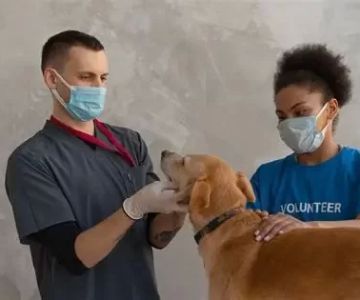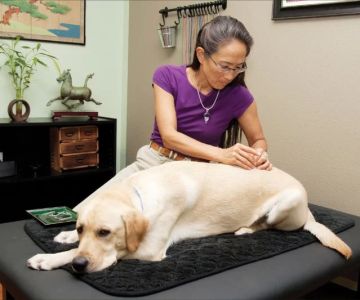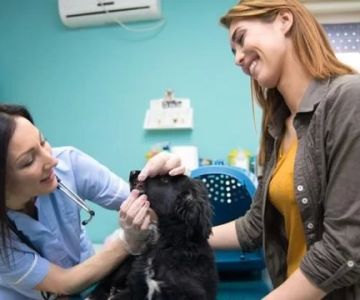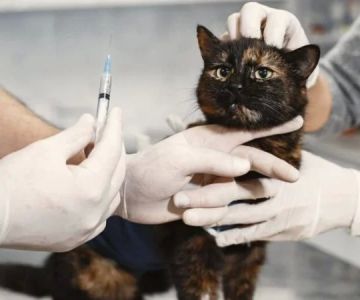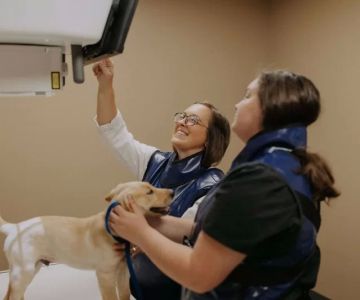How to Report a Bad Veterinarian and Protect Your Pet’s Health
- 1. Understanding Bad Veterinary Care
- 2. How to Identify Signs of a Bad Veterinarian
- 3. Documenting Your Concerns with the Veterinarian
- 4. How to File a Complaint Against a Veterinarian
- 5. What Happens After You File a Complaint
- 6. Protecting Your Pet from Future Harm
1. Understanding Bad Veterinary Care
As pet owners, we trust veterinarians to provide the best possible care for our beloved animals. Unfortunately, not all veterinary care is created equal. Some veterinarians may make mistakes or act unethically, leading to harm for your pet. When that happens, it's crucial to know how to report a bad veterinarian to protect your pet and others in the future.
Bad veterinary care can range from negligence, improper diagnoses, and incorrect treatments to more severe issues like abuse or fraud. For example, I once took my dog to a vet for a routine check-up, only to find out later that the vet had failed to properly monitor my dog’s condition during an emergency situation. This left me feeling betrayed and frustrated. As I researched how to handle such situations, I learned that filing a complaint against a bad veterinarian is an important step in addressing these issues.
2. How to Identify Signs of a Bad Veterinarian
Identifying poor veterinary care early can save your pet from unnecessary suffering. Here are some signs that you might be dealing with a bad veterinarian:
2.1 Lack of Communication
If your veterinarian doesn't take the time to explain diagnoses, treatment options, or follow-up care, that’s a major red flag. A good veterinarian should communicate clearly and listen to your concerns.
2.2 Unprofessional Behavior
Veterinarians should be professional in their interactions with both pets and pet owners. If you notice rude, dismissive, or condescending behavior from your vet, that’s a serious concern.
2.3 Inconsistent or Incorrect Diagnoses
Repeated misdiagnoses or failure to provide effective treatment could signal incompetence. If you notice that your pet’s condition is worsening despite treatment, seek a second opinion from another vet.
2.4 Poor Facility Conditions
A clean and well-organized veterinary office is essential for your pet’s health. Dirty, disorganized, or unsafe conditions could indicate that the veterinarian is not providing the best care for your pet.
It’s crucial to trust your instincts. If something feels off about the care your pet is receiving, it’s worth looking into further and taking the necessary steps to report it.
3. Documenting Your Concerns with the Veterinarian
Before you file a complaint, it’s important to document everything related to the issue. Keeping detailed records will strengthen your case if you decide to report the bad veterinarian.
3.1 Keep Detailed Notes
Write down dates, times, and any conversations you have with the vet. Record what was said, what treatments were recommended, and how your pet responded to the treatment.
3.2 Gather Supporting Evidence
If possible, gather physical evidence that supports your claim. This could include receipts, test results, photographs of injuries or poor living conditions, and other relevant documents. If you’re unsure, ask another veterinarian to review the situation and provide their professional opinion.
3.3 Get a Second Opinion
Seeking a second opinion from another vet can help confirm whether the care your pet received was subpar. A second opinion can also serve as valuable evidence if you need to report the incident to the authorities.
4. How to File a Complaint Against a Veterinarian
If you have gathered all the necessary documentation and are ready to take action, the next step is to file a formal complaint. Here’s how you can do that:
4.1 Contact the State Veterinary Board
In the United States, each state has a veterinary board that oversees veterinarians’ licenses and ethical conduct. You can file a complaint with your state’s veterinary board if you believe your veterinarian has acted unethically. The board will investigate your claims and determine whether disciplinary action is necessary.
4.2 File a Complaint with the Better Business Bureau (BBB)
If your complaint involves poor business practices (like overcharging or fraud), you can file a complaint with the Better Business Bureau (BBB). This is a good option if you want to warn others about the veterinary practice and its practices.
4.3 Contact Animal Welfare Organizations
If you believe that your veterinarian has mistreated animals, you can contact local animal welfare organizations. They may be able to conduct an independent investigation or advocate on behalf of the animals involved.
Filing a complaint helps not only protect your pet but also ensures that other pets do not face similar issues with the same veterinarian.
5. What Happens After You File a Complaint
Once you file a complaint, the relevant authorities will begin their investigation. The process can take time, but it’s important to stay patient. Here’s what to expect:
5.1 Investigation Process
The veterinary board or other regulatory agencies will conduct an investigation based on the evidence you’ve provided. They may interview you, your veterinarian, and other witnesses to gather information.
5.2 Possible Outcomes
Depending on the outcome of the investigation, the veterinarian may face disciplinary action, including a warning, suspension, or even permanent revocation of their license. In some cases, you may also be entitled to compensation for any damages caused by the veterinarian’s negligence or malpractice.
While the process can be lengthy, it’s important to keep following up with the relevant authorities and stay informed about the progress of your case.
6. Protecting Your Pet from Future Harm
After reporting a bad veterinarian, it’s essential to find a new, trustworthy veterinary practice for your pet. Consider these steps:
6.1 Research New Veterinarians
Look for veterinarians with positive reviews and good reputations. Ask for recommendations from friends, family, or local animal shelters to find a vet who will truly care for your pet’s well-being.
6.2 Trust Your Instincts
When selecting a new veterinarian, trust your instincts. A good vet should be communicative, compassionate, and knowledgeable. Make sure you feel comfortable with the care your pet will receive.
Protecting your pet’s health is a top priority, and ensuring that they receive the best possible care means knowing how to report a bad veterinarian and finding the right professional to take care of them in the future.



